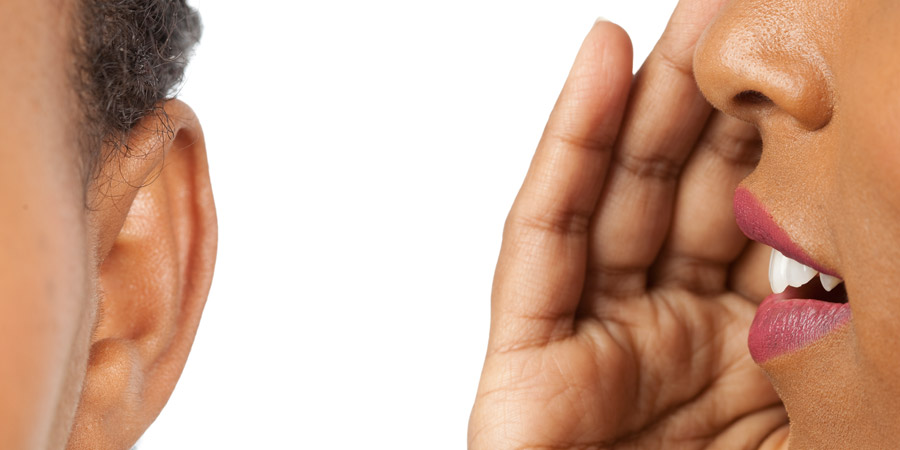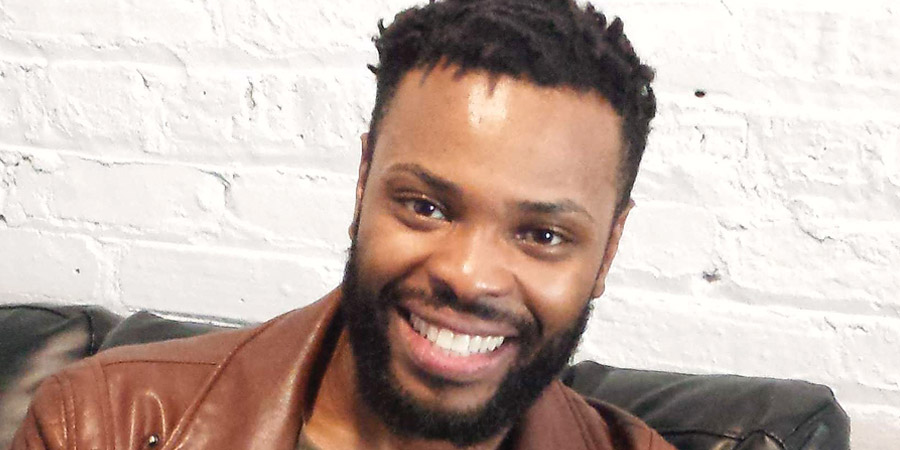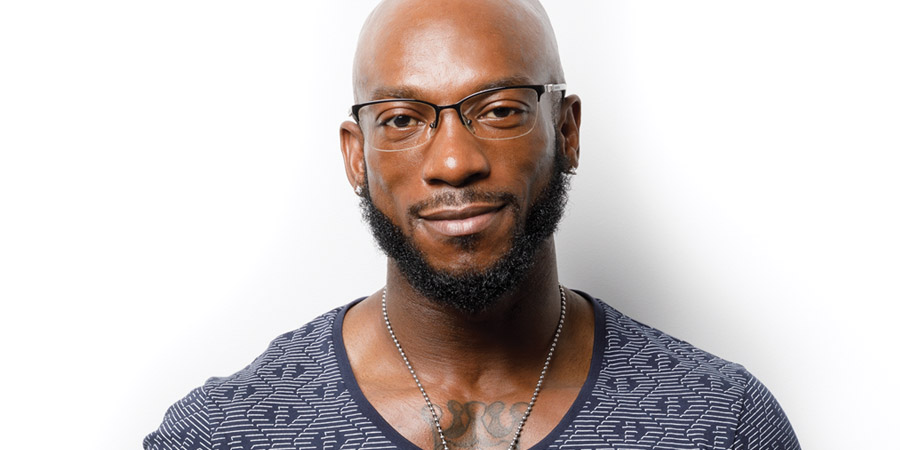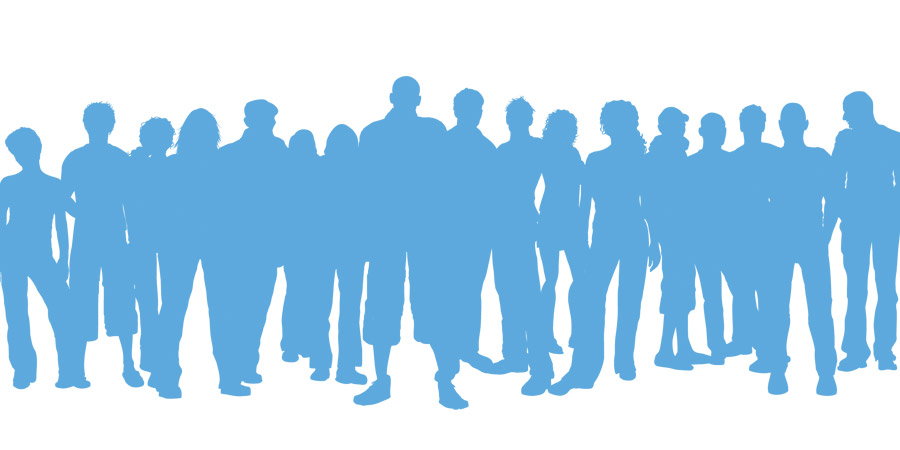
The day that Christopher Balthazar stopped by TPAN for an interview for this article was the day the FDA approved Truvada for PrEP in adolescents. I kid you not. (See Briefly.)
Chris, along with psychologist Sybil Hosek and other team members, made PrEP for adolescents possible with their work on the study here in Chicago. PrEP is taking a daily pill to prevent HIV, and young men of color who have sex with other men are particularly vulnerable to infection.
But no matter how many advances are made in HIV prevention, it seems to be out of reach for those who need it the most. Like adolescents.
Hence the CDC’s report at this year’s CROI conference in February on how people who need PrEP the most get it the least. All the gay men had a discrepancy, but more so, as usual, the black and Latino men.
As soon as I heard Dr. Dawn Smith present the agency’s estimates, I wanted to follow up on Chris’s report at CROI in 2014—four years ago—on how to reach young black and Latino gay men with PrEP information. (Use text messages instead of phone calls. Use Facebook pages even more so, since phone numbers constantly change. Run your ads on the Facebook pages of Beyonce and Lady Gaga. See “HIV Prevention is Always in Fashion.”)
Dr. Smith, who is African American herself, is working on PrEP at the top level. What’s being reported at the ground level?
Four years ago, Chris reported hearing over and over again the words Truvada whore. That was the response from young gay men when someone talked to them about Truvada for PrEP. That was the image the HIV prevention pill had.
Good news: the words “Truvada whore” have lost their stranglehold on gay men’s imaginations. Bad news: the concept of being “risky” remains associated with PrEP. Worse news: Myths continue to plague PrEP (see “PrEP myths”).
Today, Chris says that the three greatest barriers they hear regarding PrEP for HIV prevention are: not wanting to take a pill every day; worry that people will think they have HIV (because Truvada was first an HIV medication before it was approved for HIV prevention); and fear of potential side effects. “That it could still possibly be harmful to you, even though there’s evidence that suggests otherwise,” said Chris.
He said stigma remains a huge blow to PrEP because people believe only promiscuous people take PrEP. Or they simply don’t want to discuss their sex lives with a medical provider. Or they fear that the provider will assume that they’re promiscuous and that’s why they’re interested in PrEP.
Ironically, the problem with PrEP’s perception contains contradictions. On the one hand, some people feel that HIV infection is inevitable for them and others in their community. On the other, some people don’t feel that they’re at risk or understand what constitutes their vulnerability to HIV at all.
Then there’s the growing acceptance of PrEP, which continues to be marred by put downs of people who take it.
I’ve gotten sick of writing about PrEP so that people could understand it’s a good option. At one point, I was so frustrated, I thought, “Get infected with HIV. I don’t care.”
So when I ran into Dr. Smith in the conference hall in Boston during CROI, I asked her, “Aren’t you sick of telling people PrEP is helpful?”
She looked like she was about to raise her voice, but then she calmly declared, “No,
I want to fix the problem.”
Dr. Susan P. Buchbinder, who spoke at the same session where Dr. Smith made her presentation, talked about the San Francisco program using PrEP called Getting to Zero. That’s the hope—that PrEP can help us get to zero new infections.
I ran into Dr. Sharon Hillier at the conference in the women’s room. She’s been a leader in the fight to bring HIV prevention methods to women around the globe. I asked her the same question, if she was sick about having to still fight for PrEP.
“We need to move on,” she said. “PrEP works—now what?”
Later that day, the conference hosted a session titled, “PrEP Works. Now What?” The HIV experts get it. The community continues to struggle.
The following stories have been transcribed from interviews and edited for space and clarity. >>>
MYTH: PrEP can give you HIV.
TRUTH: Truvada PrEP is simply a medication, with no virus in it.
MYTH: There’s no use in taking PrEP, because getting HIV among my group is inevitable.
TRUTH: Greater vulnerability to HIV does not make infection inevitable.
MYTH: PrEP can make you more susceptible to getting HIV when you stop using it.
TRUTH: “I have kids who come to me and say, ‘Well, I heard if I take it then after I stop and start having sex, I’m going to become infected.’ That is not true,” said PrEP navigator Raymond McPherson. “When you stop, that protection against the virus goes away, and now you’re more susceptible to HIV as a result of stopping your PrEP.”
MYTH: PrEP was created to kill off gay black men, since HIV and HIV treatment didn’t kill them all. TRUTH: Truvada PrEP is medication that protects people against HIV infection.
PHOTO: ENID VÁZQUEZ
PrEP counselor and research coordinator Christopher Balthazar
It’s just heartbreaking to see now that PrEP is available, we don’t see as many young people taking it as we would have hoped. There’s a lot more work still to be done.
We find that in our research a lot of young people are uncomfortable talking about their sexual health with us. It’s something that takes practice and is something that could be another barrier to getting people on PrEP. They’re afraid—or ashamed, even—to talk about this need.
So this idea of going to a healthcare facility and talking to someone about your sexual health is difficult for many young people.
We also have a hunch that perhaps for a lot of our participants the only health care services that they’re getting is through the study, or through research. So perhaps the stigma isn’t just around PrEP, but that another barrier is actually seeing a doctor.
In the back of a lot of people’s minds, they think that me saying I need PrEP is me acknowledging that I’m promiscuous. Or me acknowledging that I have unsafe sex, which is taboo. I think there’s that stigma that exists around PrEP, but there’s also that stigma that exists around access to PrEP.
It’s disheartening. We’re so excited about PrEP being approved. It’s widely available for anyone who goes to their doctor. But yet we’re finding that that’s just half the battle.
And I still think that there are a lot of people out there who don’t really know what PrEP is or have a great understanding of it. So I think there’s still a need for education around PrEP.
I would love to see people that feel like they can benefit from PrEP to feel comfortable enough to have access to it. My hope is much broader. I would love to see [pause] … I would love to see people comfortable talking about their sexual health. Know that sex is normal, and that there should be no shame around that. Especially same-gender loving individuals. What we often see is shame around the fact that I’m having sex with someone of the same sex, right? And now I have to talk about it. And I think that makes it harder, because of the double shame. I’m talking about sex, and I’m talking about sex with another man.
So I would love to see that shame dissipate. Because I think then that people would be more open to getting their needs met. Maybe their need isn’t PrEP. Maybe it’s something else. Maybe it’s education, or maybe it’s just being part of a community where they can feel comfortable talking about what their needs are.
I think also a lot of people just need access to resources. I think about this drop-in center here [at TPAN, for youth, The Tea Room], and our center, and the tie between homelessness and HIV [many of the youth participants at both places are homeless]. A place where they can talk and have support. Homelessness places them at risk for HIV and other STIs.
I think about studies that are looking at creating PrEP communities using online tools to help people feel connected or supported by taking on PrEP. I think it’s that sort of idea that can break these barriers of stigma and shame around just sexual health in general.
So my hope would be that people would be more comfortable with talking about their sexual health, and that people can get access to the resources that they need so they can live up to their fullest potential. Be the best self that they can be.
—ENID VÁZQUEZ
Christopher Balthazar is currently working on PrEP POSSE, a study looking at perceptions of PrEP among young gay and bisexual men, using community peers to get PrEP messages out.
PHOTO: JOHN GRESS
Raymond McPherson is a PrEP navigator for the Chicago unit of the Adolescent Trials Network for HIV/AIDS Interventions
When you heard people talk about PrEP in the past, it was about Truvada whore. The only reason you’re taking Truvada is because you just want to be promiscuous. Now people are talking about I’m on PrEP or I’m HIV undetectable [meaning they’re HIV-positive but on medication and have viral levels so low, they are unable to transmit the virus to their partner], trying to promote that the fact that they’re trying to be safe and healthy.
Some of the young people we talk to about PrEP are skeptical about it, and the reason they’re skeptical is because it’s new. I think with any intervention that is new, you have to be able to explain it and get the buy-in of the community.
People have to see their own perceived risk in order to even want to use PrEP. Because if I don’t perceive that I’m at risk for HIV, there’s no need for me to take Truvada. Some of the things that are putting them at risk are things that they themselves don’t even think are putting them at risk.
One of the things that they all said to me was, “Well, Raymond, I’m not that person. I’m not promiscuous. I’m only having sex with Johnny and Steve. Those are the only two people. People who get HIV are out there having sex with 10 or 15 people, and I’m not that person.”
And what they need to understand is that it does not matter how many people you are having sex with. It just takes one.
Sometimes they don’t understand that we’re looking at the zip code that they live in, what surveillance data is showing. That there’s a high prevalence of STIs in this neighborhood, so you’re more susceptible to HIV or getting an STI, and we want to make sure the interventions we have in place are able to reach you where you’re at.
The other thing that we hear is young gay men always think it’s an older gay man’s disease. They need to understand their own perceived risk. Just because you only have sex with someone who’s 16, 17, or 18 just like you, doesn’t mean that those individuals are only having sex with people your same age. Younger gay men have sex with older gay men, just as younger heterosexuals have sex with older heterosexuals.
It’s so much about perception.
Even though they have only two or three partners, the persons in the African American or Hispanic community are always going to be more vulnerable to the disease because there’s a higher prevalence of infection in their community. It doesn’t matter how many partners they’re having sex with versus the white community, where persons may have eight or nine partners. The prevalence is so low in the white MSM community, and the treatment levels so high, that the chances of getting HIV are always going to be much lower than the other communities. MSM [men who have sex with men] specifically, I’m talking about. So in that respect, I completely understand it. They don’t.
This neighborhood has six syphilis cases, but this other neighborhood has 25. Those are things that we see but they don’t. So we try to help them understand that.
Dr. Lisa Henry Reid [a Chicago pediatrician who works in HIV] always says that you have to be at least 27 to fully understand what your true risks are, because the frontal cortex of your brain is not fully developed until then. You will not be able to rationally make some decisions before then.
Sometimes I say, “Oh, she’s absolutely right.” Because you can have this one kid who comes in with 10 STIs but still doesn’t learn. “Oh, it’s not going to happen again.” “This is the tenth time. You said that nine times ago. So how many more times is this going to happen?” They have to get to that point where they see their own risk for the infection or the disease.
You know, one thing that I would love for young Latino and African American men to understand is that they are a part of this planet. That they are a part of this world. Don’t let negativity or the fact that you hear these things all the time, that you are the highest growing number of HIV infections, discourage you or make you think that you are absolutely vulnerable and going to get HIV. That is not true.
We know that even though this community has the highest growing rate of infection, we also know that there is something there to cut that rate of infection, and it’s called PrEP. It’s called taking your one-pill-a-day Truvada to reduce your chances of getting HIV.
I remember a parent told their kid once that just because they’re gay they’re going to get HIV. And a lot of times I have young gay men come to me and say, “Why should I take PrEP? I’m going to get HIV anyway because it’s in my community.” The reality is yeah, it’s in our community, and that’s the reason why we need to take PrEP. That’s the reason why we need to take steps to prevent ourselves from getting an STI, because an STI increases our chances of getting HIV.
A message to young people is to understand that even if you don’t think you are at risk, you are at risk. Because once you become sexually active, just one partner alone, just one incident alone, just one slip up alone can lead to HIV or lead to an STI. So you have to do what is necessary to protect yourself regardless of what people around you are saying or calling you. I will be a Truvada whore as long as I know that what I’m doing is right to take care of myself. Take my medication, to reduce my chances of getting HIV, and then condoms to reduce my chances of getting an STI. We have to understand that PrEP doesn’t prevent an STI, only HIV.
So that would be my message to young people. They’re the future of tomorrow. If you are not going to figure it out today, who’s going to figure it out? —ENID VÁZQUEZ
Raymond McPherson helps coordinate community activities, such as the Vogue School.
Known simply as Task Force, the group serves LGBTQ youth in an impoverished, black neighborhood on Chicago’s West Side. The twice-weekly Vogue School brings youth together for dance practice—as well as friendship and community-building.
Allante Nyla, PrEP Liasion, Project Heat: More Latinos and blacks are more receptive to PrEP now that they know what it is. Also, more young people are now interested because no parental approval is needed because of the FDA approval. They may ask about the side effects. Nausea, upset stomach, diarrhea. Depends on your body. Maybe no side effects at all. So it doesn’t have a bad rep? Allante: Not anymore.
Tye: I’m actually taking PrEP. It’s a good med to be on. It has a good reputation and I would recommend it. [Tye, who’s 26, had been taking Truvada for PrEP for three months. In the first two days, he experienced tightness in his chest that went away. His doctor told him different people have different side effects.]
Reyna Ortiz, Task Force Testing and program services Coordinator: If it’s talked about [out in the community], it’s not talked about in a way that’s helpful to people. One thing I heard that was so mind blowing to me was that PrEP was like the flu vaccine, it puts the virus in your body. So we have to put more education in the community. Make sure they understand it’s beneficial. Use it correctly. Take it consistently. Be really aware of the window period. Probably a couple of kids went to their doctor frantic and got PrEP, and a month later came up reactive [HIV-positive]. [Meaning that they tested HIV-negative at the time they got PrEP, but their bodies were still in the process of seroconverting to HIV-positive.]
Rhonda Johnson, Prevention with Positives (PwP) Coordinator: PrEP was promoted wrong, for high-risk instead of everyone.
Karma: People aren’t afraid of PrEP. Because people don’t let anyone know what they like [to do sexually].
Gia: Some people, it makes them throw up and get nauseated. Different strokes for different folks. Do people still say ‘Truvada whore’? Gia: No, not necessarily.






